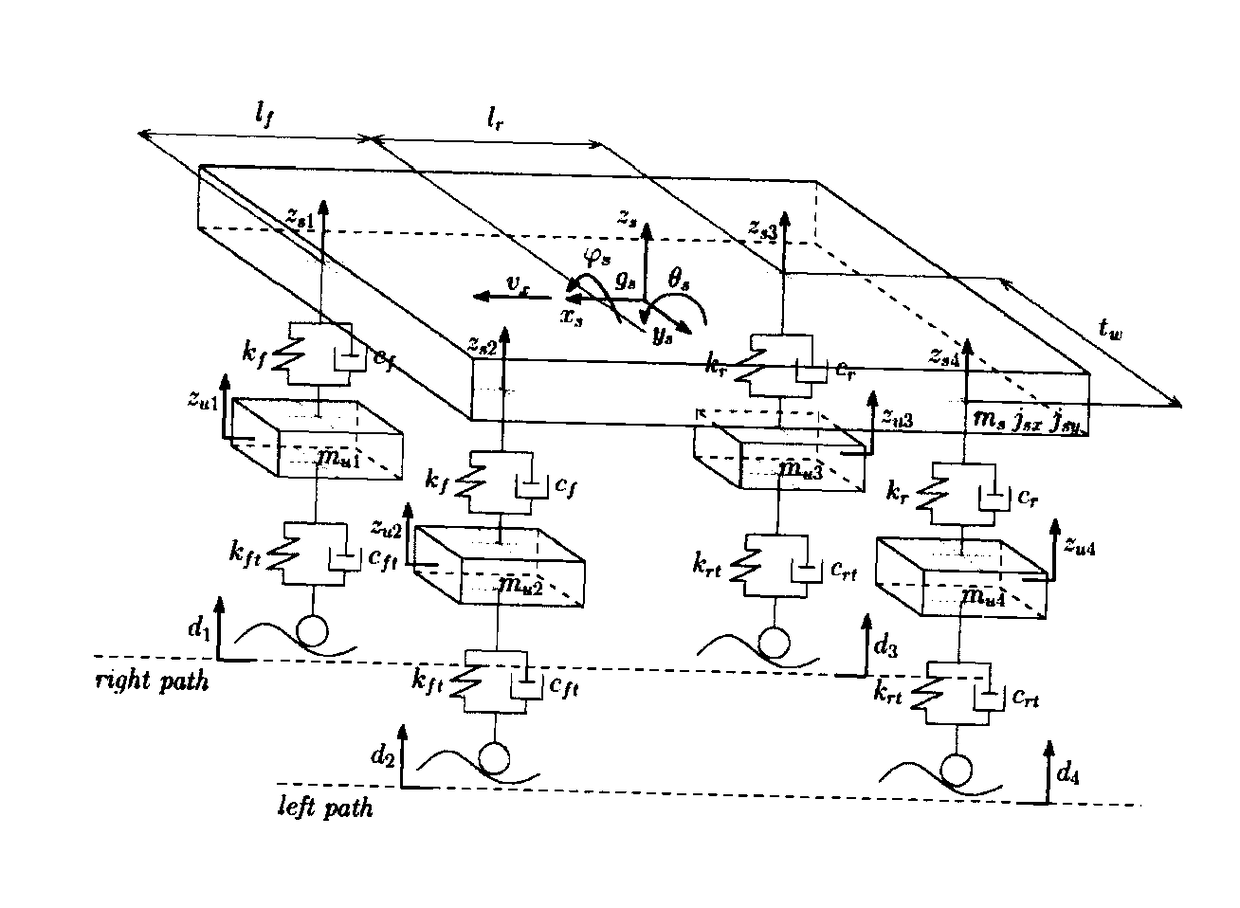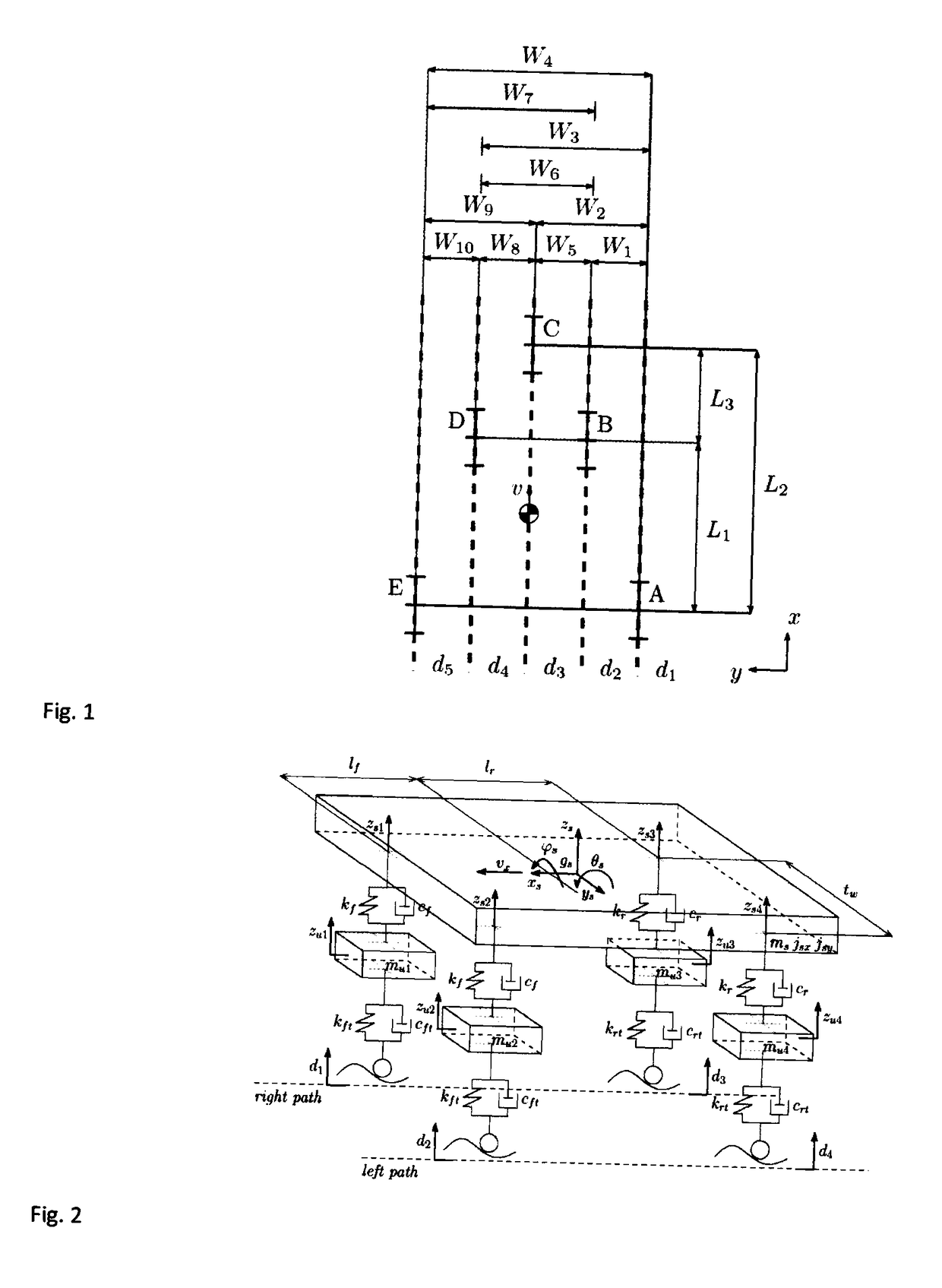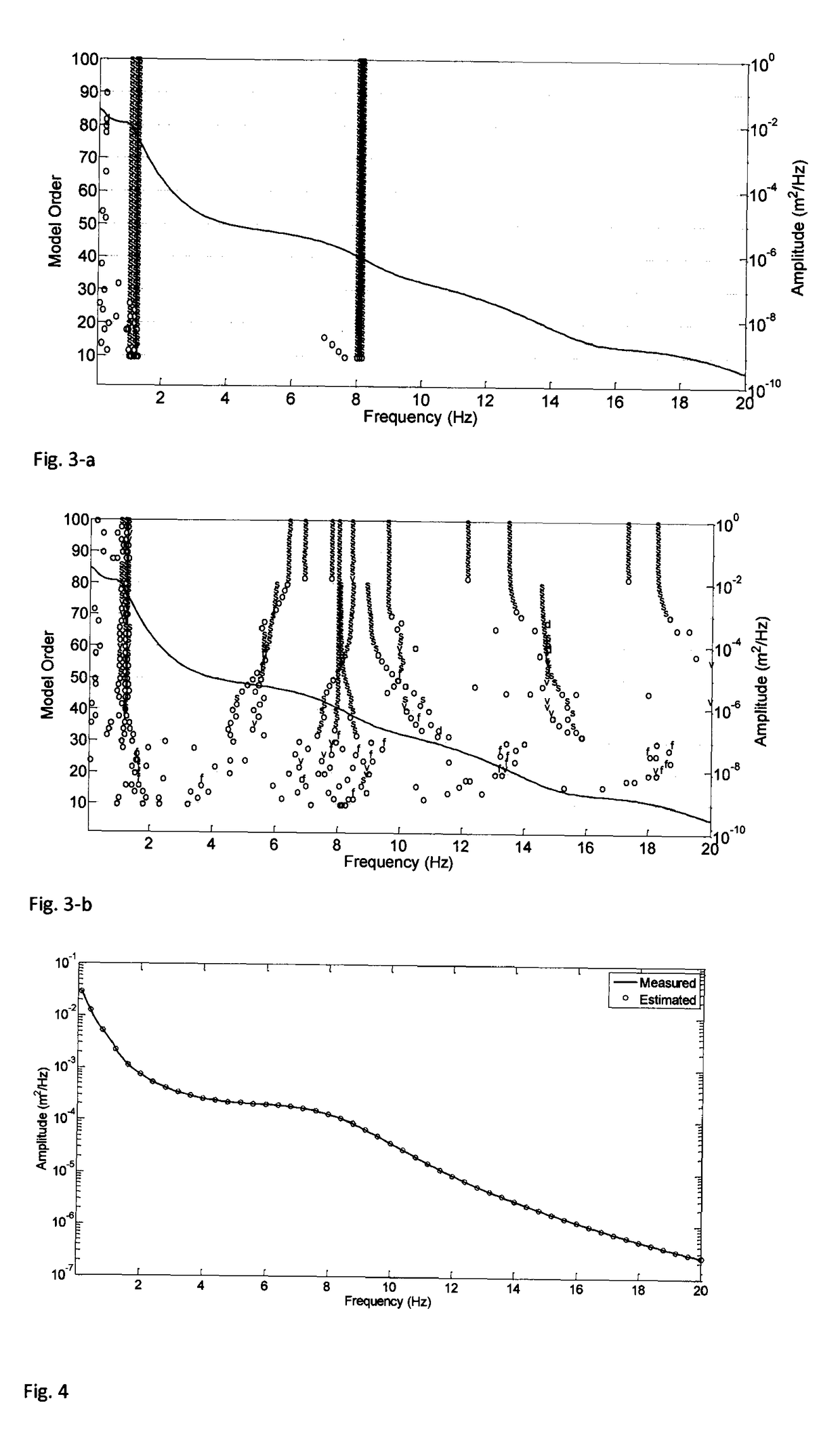Method for determining the modal parameters of road or rail vehicles and for the in-direct characterization of road or rail profiles
- Summary
- Abstract
- Description
- Claims
- Application Information
AI Technical Summary
Benefits of technology
Problems solved by technology
Method used
Image
Examples
numerical example
[0145]To show the performance of the procedure of identification, object of the present invention, in the following a numerical example of identification of a vehicle system is described, with concentrated parameters, with 7 degrees of freedom (DOFS, degree of freedom), represented in FIG. (2). The motion of a vehicle with geometrical features and known modal parameters on a surface which respects the hypothesis of the method according to the present invention was simulated in a suitable computing field. The model used allows to describe the modes of rigid body of the suspended mass (the chassis), i.e. heave, pitch and roll, and the modes of the rigid body of the non-suspended masses (the wheels), i.e. vertical shaking and roll motions of front and rear axles. The natural frequencies fn=ωn / 2π (Hz) and the damping factors ζn (%) are reported in the following table:
Modefn (Hz)ζn (%)Description11.06427.954Heave21.22132.189Roll31.29534.295Pitch48.04426.031rear axle hop58.12927.794front ...
PUM
 Login to View More
Login to View More Abstract
Description
Claims
Application Information
 Login to View More
Login to View More - R&D
- Intellectual Property
- Life Sciences
- Materials
- Tech Scout
- Unparalleled Data Quality
- Higher Quality Content
- 60% Fewer Hallucinations
Browse by: Latest US Patents, China's latest patents, Technical Efficacy Thesaurus, Application Domain, Technology Topic, Popular Technical Reports.
© 2025 PatSnap. All rights reserved.Legal|Privacy policy|Modern Slavery Act Transparency Statement|Sitemap|About US| Contact US: help@patsnap.com



